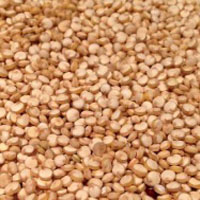AquaCrop parametrisation for quinoa in arid environments

Accepted: 11 December 2020
HTML: 76
All claims expressed in this article are solely those of the authors and do not necessarily represent those of their affiliated organizations, or those of the publisher, the editors and the reviewers. Any product that may be evaluated in this article or claim that may be made by its manufacturer is not guaranteed or endorsed by the publisher.
Highlights
- 13% yield losses when comparing progressive drought with full irrigated treatments.
- 25% water savings when comparing progressive drought with full irrigated treatments.
- Calibrated and validated NRMSE values of 10.0% and 13.3% for biomass, respectively.
- Calibrated and validated NRMSE values of 19.2% and 7.3% for yield, respectively.
The resilience of quinoa to drought stress conditions makes the crop suitable for the Sahel region. It can support grain production during the dry season and be considered an alternative crop for alleviating food insecurity within the region. Given the importance of this crop outside the indigenous cultivation area, there is a requisite for the development of crop models to facilitate further expansion of quinoa along the Sahel region. Crop water models are of interest due to increasing pressure on water resources, and the portrayal of irrigation scheduling as the best option for water optimisation. The AquaCrop model was selected, as this model simulates crop development and derives both optimal frequencies and net applications of irrigation. Due to limited water resources in the region, different irrigation regimes [full irrigation, progressive drought (PD), deficit irrigation and extreme deficit irrigation] were proposed for analysing yield and biomass responses to water stress conditions. Results suggest that yields were stabilised at around 1.0 Mg ha–1 under PD, thereby prioritising maximum water productivity rather than maximum yields. Water optimisation was attained by watering less at a suggested 310 mm, but with more frequent irrigation events, 28 rather than 20.
How to Cite
PAGEPress has chosen to apply the Creative Commons Attribution NonCommercial 4.0 International License (CC BY-NC 4.0) to all manuscripts to be published.

 https://doi.org/10.4081/ija.2020.1749
https://doi.org/10.4081/ija.2020.1749



